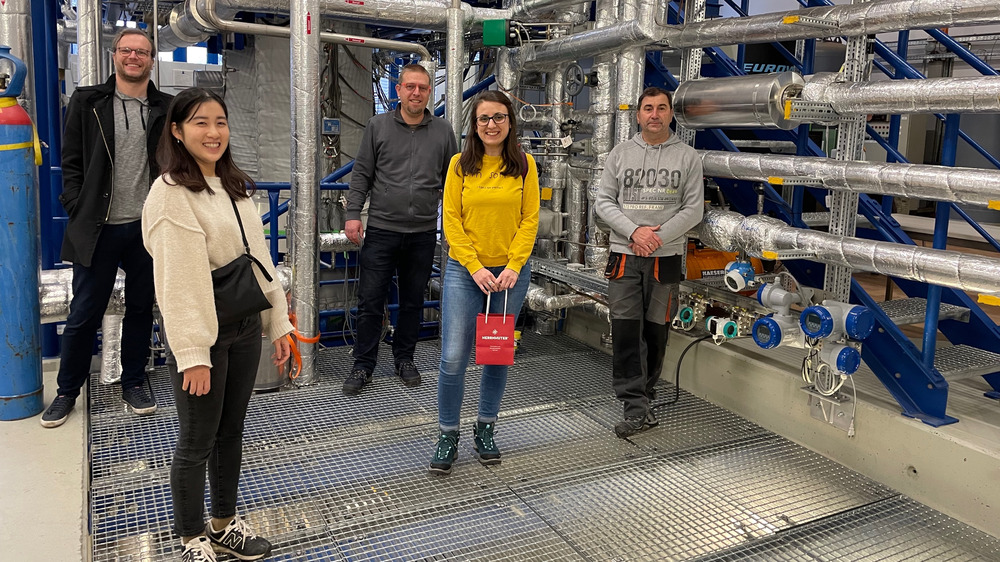This question can now be answered in a very understandable and vivid way. Dobrila Grujikj has created a computer animation on the TMS battery as part of her three-month IAESTE internship at IPM.

This question can now be answered very understandably and vividly. Dobrila Grujikj, student from the "Ss. Cyril and Methodius University" in Skopje (North Macedonia), has created a computer animation on the TMS battery as part of her three-month IAESTE internship at IPM.
Dobrila Grujikj studies at the "Faculty of Computer Science and Engineering" and has already gained some practical experience in the creation of computer animations during her studies, on which she could now build.
Under the guidance of Thomas Schäfer, she first dealt with the functioning of the TMS battery and considered which simplifications were necessary to make the functioning easy to understand in an animation. She also received important support from Steffen Härtelt, a technician at the THERESA test facility.
She then created an appropriate storyboard and carried out the modeling of the main components of the TMS battery system, including the TMS combi machine. Afterwards, all settings for the animation of the scenes, the lighting and the camera setup were done before rendering the animation. Finally, explanations were added to the animation and it was finalized. The result is impressive! You can find the created animation on the TMS project website.
On 21.12. the colleagues of IPM said goodbye to Dobrila Grujikj and honored your work.
Already about 3 years ago, the development of a concept for the realization of the TMS battery was started at the IPM. The TMS battery is a thermo-mechanical power storage (TMS) and is based on the many years of experience of the scientists working at IPM. Their expertise in the application of thermodynamic processes and their technological implementation particularly stands out here.
After initial ideas from the scientists, the concept for the implementation of a highly flexible thermal battery for the energy transition matured. These batteries are also known as CARNOT batteries. The concept was further developed and perfected together with Spilling Technologies GmbH, a company based in Hamburg for more than 130 years.
The unique development of the TMS battery received international attention within the framework of iea Energy Storage Task 36 - Carnot Batteries, in which IPM research staff members Thomas Schäfer and Sebastian Braun are actively involved.
The special feature of the TMS battery, compared to other systems, is the much simpler but effective implementation of CO2-free electricity storage. The core of the system is the unique, multi-stage TMS combination machine, which can work very effectively as both a steam compressor and a steam expander.
The TMS battery conserves raw material resources, as it requires almost exclusively classic, fully recyclable raw and operating materials, such as steel and water, and also greatly simplifies the operating methods of a CARNOT battery! Unlike conventional systems, the TMS battery requires only a high-pressure steam accumulator and a low-pressure steam accumulator. Both are coupled by the newly developed TMS combination machine.
The storage and retrieval of electrical energy can be very flexible. In addition, the TMS battery is capable of storing available surplus thermal energy and releasing it again when required, as electricity or heat. This makes the TMS battery suitable for coupling different energy sectors and thus makes an important contribution to the energy transition.
